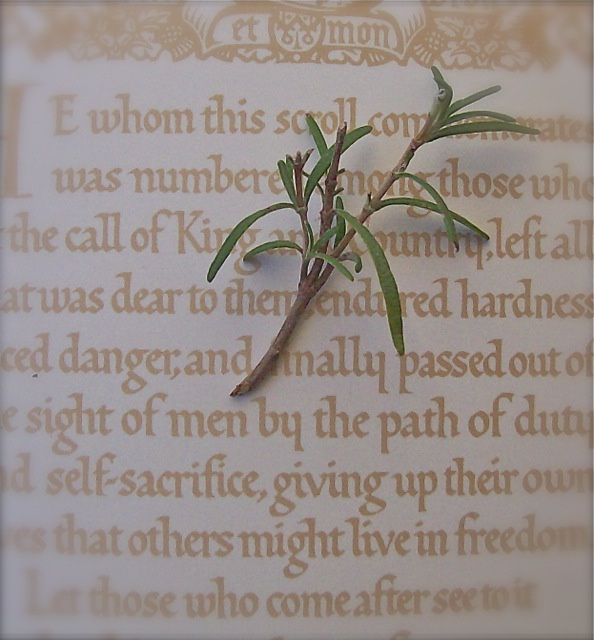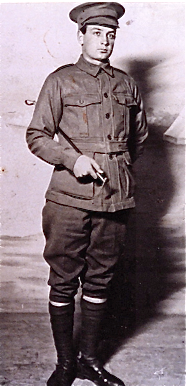ANZAC Day
 It was the centenary of Anzac Day on Saturday: 100 years since Australian and New Zealand troops landed on the Turkish beaches at Gallipoli to begin an eight-month campaign that was a military failure, but which continues to resonate in the life of all three countries.
It was the centenary of Anzac Day on Saturday: 100 years since Australian and New Zealand troops landed on the Turkish beaches at Gallipoli to begin an eight-month campaign that was a military failure, but which continues to resonate in the life of all three countries.
Indeed, over recent decades the commemoration has grown in Australia’s public mind to the point where I think Anzac has become our true national day, though for reasons it is almost impossible to properly understand let alone articulate.
Even so I found myself drawn to attend not the great national ceremonies at the Australian War Memorial in Canberra where I live, but rather the morning service of a suburban sub-branch of the Returned & Services League at the Yamba Sports Club, not far away from home at all.
Partly it was a desire to avoid the crowds of well over 100,000 people at the main events. But mostly it was because the club, the memorial stone and the flagstaff are on the site where the family – two generations of servicemen – I’ve written about in my latest book, For Love of Country, built their homestead.
The farm in fact was called Yamba. And while the house has long since gone – the paddocks, orchards and outbuildings subsumed beneath suburban streets and houses, bowling greens and a shopping centre – two English oak trees in the front garden planted by Captain and Mrs Eddie still stand outside the clubhouse. Bearing witness, for those who know, to this soldier-settler who served at Gallipoli and France during the First World War, and the three sons who went to the Second … and did not come home.
It was another military tragedy, as war always is. But standing there on this cool autumn morning, I had a sense of their presence … people whose lives I have come to know so well during the research and writing these past three years. Indeed, one of the Eddies’ grand-daughters was there to bear witness to the continuum of time and place, and the role every individual plays in the narrative of history.
Nor was it just me. We legatees of those first Anzacs overwhelmingly felt the same. They usually have about ten people at the Yamba morning service. Today they had thirty or forty. The old, middle-aged, and young … men, women and youngsters. A troop of scouts with their banner, one detailed to run up the flag after The Last Post. Ex-service people with their medals and sprigs of rosemary…
Several serving personnel in uniform were there to be an honour guard as we stood in what had been the Eddie’s garden and went through the rituals of the non-denominational service. The same as those performed everywhere on this Anzac Day, at the War Memorial and the beach at Anzac Cove, albeit here writ very small…
The president read a call to remembrance … not just of the Anzacs, but for all who have served our country in many theatres of conflict down to the present. A few simple wreaths were laid and there were brief prayers of peace for the dead and also the living. The famous verse from Laurence Binyon’s Ode to the Fallen was recited: They shall grow not old, as we that are left grow old… The Last Post was played on a recording, a minute’s silence, followed by Reveille. Lest we Forget. And in quavering, unaccompanied voices, we sung O God Our Help in Ages Past, and the National Anthem.
At the end of it our local Senator read a message from the Prime Minister – a précis of the fine speech he gave at Gallipoli that morning. It spoke of the Anzacs’ courage and perseverance, duty and selflessness; of how they represented the best of those qualities we saw in ourselves, and he urged us to emulate them in our own time.
 All very generous and true. But whether, as we stood drinking hot tea and dunking Anzac biscuits afterwards, these sentiments got to the heart of the matter I just don’t know. What is it about Anzac Day that speaks so directly to the young? And the revival of interest is all driven from below – from the young people themselves. It’s not being imposed by politicians from above. They simply reflect it.
All very generous and true. But whether, as we stood drinking hot tea and dunking Anzac biscuits afterwards, these sentiments got to the heart of the matter I just don’t know. What is it about Anzac Day that speaks so directly to the young? And the revival of interest is all driven from below – from the young people themselves. It’s not being imposed by politicians from above. They simply reflect it.
I imagine it’s something to do with the rediscovery of our history at the time of the Bicentenary of the founding colony in 1988.
Gallipoli was the first time Australians went to war as a federated Commonwealth, not as six separate colonies. It was the first time they fought on the battlefields of Europe, and were not found wanting. And national days, sadly, seem to require battles (successful or otherwise) to commemorate, rather than peaceful, constitutional referendums.
But it’s more than that. There’s a very deep human need to connect to the generations that have gone before. We are instinctively social animals, and I have a sense until recently that was largely missing in non-Aboriginal Australians in this land. Our people are mostly migrants or descended from them. It’s why we looked to Europe and elsewhere so often to discover our identity.
Now, increasingly, we find it in Anzac Day. Home is no longer “over there”. It’s here. And hence the youngsters in the marches wearing their grandfathers’ and great-grandfathers’ medals. Carrying their banners. Hence, too, the media overflowing with reports and old photographs as families rediscover the parts their relatives played in battles long past.
For ultimately history is not a grand, disembodied sweep of events. It is the sum of countless individual stories and the roles played by each man and woman and child who were involved with them. His-story. And her-story. And for many of us I suspect that is what Anzac Day has come to represent: that by rediscovering the qualities and actions in life of those of our families who have gone before, we are in some inexpressible way trying to find connections, meaning and belonging in our own.
After all, as the Prime Minister said in his speech on the Gallipoli beach this morning, unless Anzac Day was emblematic of something profound within each of us, we would not have been there, this morning.
So the autumn leaves on the Eddies’ oak tree outside the Yamba Sports Club continued to turn sere and yellow, and fall gently to the ground as we made our way back to our cars. The banners rolled up for another year. The tea wagon moving off. Sprigs of rosemary for remembrance in our pockets. And still faintly around us, the bugles calling somewhere from out of the past.
Photo credits:
Sprig of rosemary; grave of Trooper Rush, Gallipoli: author photos.
Private Howard Waring, KIA France 1916: author’s great-uncle
